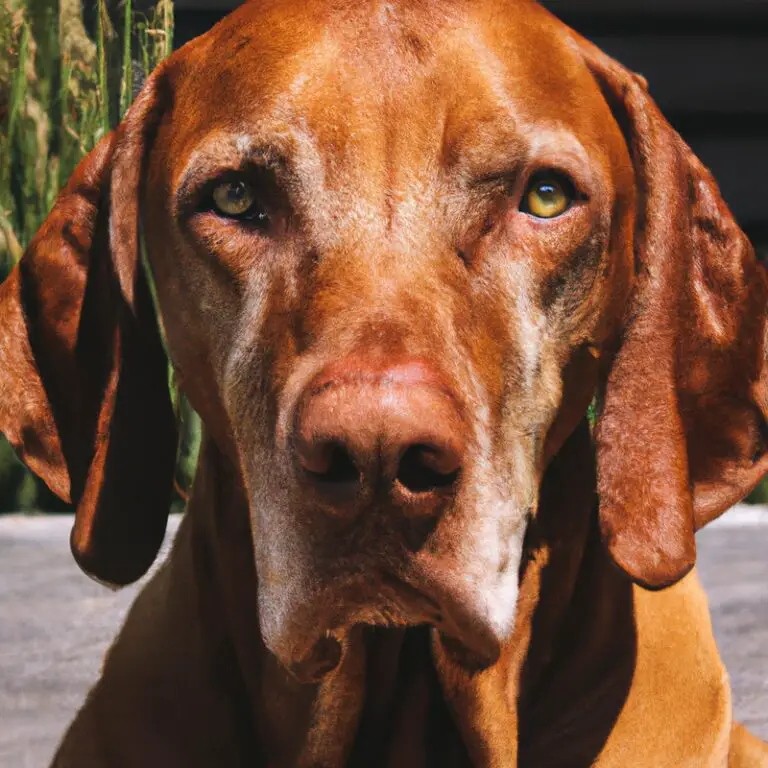What Are The Best Treats For Positive Reinforcement During Training?
Key Takeaways:
- High-value treats, such as small pieces of meat or cheese, are effective for positive reinforcement during training.
- Choosing treats that are easily consumable and have a strong scent can help maintain engagement and motivation during training sessions.
- Varying the types of treats used can prevent desensitization and enhance the effectiveness of positive reinforcement.
- It is important to consider the individual preferences and dietary restrictions of the trainee when selecting treats for positive reinforcement during training.
Are you struggling to find the perfect treats to motivate and reward your furry pal during training sessions?
Look no further! As an expert on positive reinforcement training for dogs, I understand the importance of finding the right treats to encourage and shape their behavior.
In this article, I will guide you through the world of dog treats, from understanding the role of positive reinforcement to identifying the best options for your pup.
We’ll explore the nutritional value, size, texture, and scent of treats that make them effective in training.
Plus, I’ll answer frequently asked questions and share valuable tips on how to make the most of treat rewards.
Get ready to make training fun and rewarding for both you and your four-legged friend!
| Treats | Description | Pros | Cons |
| Small dog treats | Small-sized treats specifically made for dogs | – Convenient size for training sessions – Dogs love them | – Can be high in calories – May be expensive |
| Freeze-dried meat | Real meat that has been freeze-dried | – High value for most dogs – Natural and nutritious | – Can be expensive – May not be suitable for dogs with allergies |
| Peanut butter | A spread made from peanuts | – Irresistible for most dogs – Easy to use as a treat or for stuffing toys | – Can be messy – Some brands may contain xylitol, which is toxic to dogs |
| Cheese | Various types of cheese, such as cheddar or Swiss | – High value for most dogs – Can be cut into small pieces easily | – Some dogs may be lactose intolerant – Can be high in fat |
| Carrots | Fresh or cooked carrots | – Low in calories – Crunchy texture can be appealing to some dogs | – Not as enticing as other treats for some dogs – May not be suitable for dogs with certain health conditions |
Understanding positive reinforcement in dog training
Definition of positive reinforcement in dog training
Positive reinforcement in dog training refers to the practice of rewarding desired behaviors to increase the likelihood of them being repeated.
This involves providing dogs with something they find rewarding, such as treats, praise, or play, immediately after they exhibit the desired behavior.
The goal is to create a positive association and strengthen the bond between the dog and trainer.
Positive reinforcement is a effective and humane method that encourages dogs to learn and behave in a desired manner.
Benefits of using positive reinforcement in dog training
Positive reinforcement is a powerful tool in dog training that comes with several benefits.
Firstly, it promotes a strong bond between you and your furry friend.
By rewarding desired behaviors with treats or praise, you build trust and create a positive learning environment.
Secondly, positive reinforcement effectively stimulates your dog’s brain, making them more engaged and eager to learn.
This method also enhances their problem-solving skills and boosts their confidence.
Lastly, using positive reinforcement helps to reduce stress and fear in your dog, resulting in a happy and well-adjusted pet.
Importance of treats in positive reinforcement training
Role of treats in positive reinforcement training
Treats play a vital role in positive reinforcement training. They serve as a valuable tool for rewarding desired behaviors and motivating your dog to learn and repeat them.
When used correctly, treats can enhance the training experience by creating a positive association and reinforcing good behavior.
It’s important to choose high-value treats that your dog finds extremely rewarding. This will help keep their interest and focus during training sessions.
Remember to use treats as a temporary aid, gradually phasing them out as your dog becomes proficient in the desired behavior.
Types of treats that work best for positive reinforcement training
When it comes to positive reinforcement training, finding the right treats is crucial. Here are some types of treats that work best:
- High-value treats: Look for treats that your dog absolutely loves. Whether it’s small pieces of cooked chicken, freeze-dried liver, or cheese cubes, choose something that your dog finds irresistible.
- Soft and chewy treats: These treats are great for quick and easy rewards during training sessions. Soft treats are easy to break into smaller pieces and can be quickly consumed by your dog.
- Treats with a strong smell: Dogs rely heavily on their sense of smell, so treats with a strong aroma can be very effective in capturing their attention and reinforcing good behavior.
Remember, the key is to find treats that your dog finds highly rewarding. Experiment with different types and see which ones get your dog the most excited and motivated during training!
Factors to consider when choosing treats for positive reinforcement training
Nutritional value of treats
Treats for positive reinforcement training should also have nutritional value.
Look for treats that are low in calories, made with quality ingredients, and free from artificial additives.
Avoid treats high in sugar and fillers.
Opt for treats made with real meat or vegetables, as they provide essential nutrients.
Some treats also have added vitamins and minerals.
Always check the label for the ingredients and nutritional information to ensure you’re choosing a healthy option for your pet.
Size of treats
When choosing treats for positive reinforcement training, the size of the treats is important. You want to consider the size of the treat in relation to the size of your dog’s mouth.
Treats that are too large can be difficult for your dog to eat quickly, potentially slowing down the training process.
On the other hand, treats that are too small may not be as enticing or satisfying to your dog. It’s best to choose treats that are bite-sized and easily consumable, allowing your dog to quickly and effortlessly enjoy the reward for their positive behavior.
Texture and scent of treats
When choosing treats for positive reinforcement training, texture and scent play an important role.
Treats with a desirable texture, such as soft and chewy, can be more appealing to dogs and easier for them to consume quickly.
The scent of the treat can also play a significant role in capturing your dog’s attention and motivating them during training sessions.
Consider treats with a strong aroma like chicken or bacon to make them more enticing for your furry friend.
Dog’s preferences and dietary restrictions
When selecting treats for positive reinforcement training, it’s important to consider your dog’s preferences and dietary restrictions.
Every dog is unique and may have specific likes or dislikes when it comes to treats.
Some dogs may have allergies or sensitivities to certain ingredients, such as grains or meat.
It’s vital to read the labels and choose treats that align with your dog’s dietary needs.
Additionally, observe your dog’s tastes and adjust accordingly – some dogs prefer crunchy treats while others prefer softer ones.
Best treats for positive reinforcement training
High-value treats: examples and benefits
For positive reinforcement training, high-value treats can be incredibly effective.
These treats are extra special to your dog, making them great motivators.
Some examples of high-value treats include small pieces of boiled chicken, cheese, or freeze-dried liver.
These treats are incredibly appealing to dogs and can help increase their focus and motivation during training sessions.
The benefits of using high-value treats include faster learning, improved attention, and a stronger bond between you and your dog.
So, don’t forget to have some high-value treats on hand for your training sessions!
Other effective treats: examples and benefits
There are several effective treats that you can use for positive reinforcement during training. Here are some examples and the benefits they offer:
- Small pieces of lean cooked meat, such as chicken or turkey, are enticing and high in protein.
- Freeze-dried liver treats are aromatic and delicious, making them a favorite among many dogs.
- Soft training treats, like cheese or small cubes of hot dogs, are easy to chew and swallow quickly.
- Peanut butter, when given in small amounts, can be a tasty and long-lasting reward.
- Classic dog biscuits or crunchy treats provide a satisfying crunch and can be a great option for dogs who enjoy chewing.
These treats serve as valuable rewards for your dog’s good behavior during training sessions. They are motivating and help reinforce positive behaviors, making the training process more enjoyable for both you and your furry friend.
How to use treats for positive reinforcement training
Timing and consistency in treat reward
Timing and consistency in treat reward is important for effective positive reinforcement training. When using treats as rewards, it is crucial to deliver the treat immediately after the desired behavior to reinforce the connection in your dog’s mind.
Additionally, consistency is key.
Use the same type of treat every time and ensure you reward the behavior consistently. This will help your dog understand what behavior is being reinforced, leading to quicker and more successful training results.
Techniques for treating during training sessions
During training sessions, it’s important to use the right techniques for treating your dog. Here are some tips to keep in mind:
- Timing: Give the treat immediately after your dog performs the desired behavior. This helps them associate the treat with the action.
- Size: Use small, bite-sized treats so your dog can quickly consume them without getting too full or distracted.
- Variety: Use a variety of treats to keep your dog engaged and motivated. Mix it up with different flavors and textures.
- Consistency: Reinforce the behavior consistently by giving a treat each time your dog does what you want. This helps reinforce the association between the action and the reward.
- Reinforcement Schedule: Gradually decrease the frequency of treats as your dog becomes proficient in the desired behavior. Instead, reward intermittently to maintain the learned behavior.
Remember, treats are a valuable tool in positive reinforcement training, so use them effectively to encourage and reward your dog’s good behavior.
Gradually fading treats and transitioning to other rewards
As you progress in your training journey, it’s important to gradually reduce the reliance on treats and introduce other rewards.
To do this, start by using treats less frequently and incorporating verbal praise and physical affection as rewards instead.
Additionally, you can incorporate toys or playtime as rewards during training sessions.
Gradually fading treats and transitioning to other rewards ensures that your dog learns to respond to a variety of motivators, making the training more well-rounded and enjoyable for both of you.
Frequently Asked Questions
How many treats should I give during training sessions?
During training sessions, it’s important to consider the quantity of treats you give your dog.
You should aim to strike a balance between providing enough motivation and not overindulging.
Generally, it’s recommended to break treats into small pieces and offer them frequently to keep your dog engaged.
This way, you can use more treats without overfeeding.
However, remember that every dog is different, so pay attention to your dog’s response and adjust accordingly.
Can I use regular dog food as treats?
Yes, you can use regular dog food as treats during training. Many trainers recommend using small pieces of your dog’s regular food as rewards.
This is a great way to incorporate positive reinforcement into your training sessions without relying solely on store-bought treats.
Just be sure to use small portions and adjust your dog’s daily food intake accordingly to prevent overfeeding.
What if my dog loses interest in the treats?
If your dog loses interest in the treats during training, it’s important to try different options to keep them engaged.
Firstly, consider using higher-value treats such as small pieces of cooked meat or cheese.
Secondly, try incorporating variety by using different types of treats, such as crunchy or chewy ones.
Thirdly, you can also use interactive toys or play sessions as rewards instead of treats.
Remember, every dog is unique, so it might take some trial and error to find the treats that work best for your furry friend.
Are there any alternatives to treats for positive reinforcement training?
Yes, there are alternatives to using treats for positive reinforcement training. Some effective alternatives include:
- Verbal praise: Use a cheerful and enthusiastic tone to verbally praise your dog when they perform the desired behavior. Make sure to use specific and immediate praise to strengthen the connection between the behavior and the reward.
- Physical affection: Dogs love to be petted and receive physical attention. Incorporate gentle strokes, belly rubs, or ear scratches as rewards for good behavior during training sessions.
- Playtime: Play is a great way to motivate and reward your dog. Incorporate short play breaks and interactive games as a reinforcement for desired behaviors during training.
- Toys: Many dogs are highly motivated by toys. Use their favorite toy as a reward or incorporate interactive toys, like puzzle toys, into the training session.
Remember, it’s important to find what motivates your individual dog and use that as an alternative to treats for positive reinforcement training.
Final Verdict
Using treats as a form of positive reinforcement in dog training can be highly effective. Not only do treats serve as a motivator for dogs, but they also help strengthen the bond between the trainer and the dog.
When choosing treats, it’s important to consider their nutritional value, size, texture, scent, and the dog’s preferences and dietary restrictions.
High-value treats such as freeze-dried meats or cheese can be especially effective in capturing the dog’s attention. However, it’s important to remember that treats should be used strategically, with proper timing and consistency, and gradually faded out as the dog progresses in their training.
If your dog loses interest in the treats, it’s worth exploring other reward options such as praise, affection, or play.
Remember, positive reinforcement is a powerful tool that can make training both enjoyable and effective for both the trainer and the dog.






